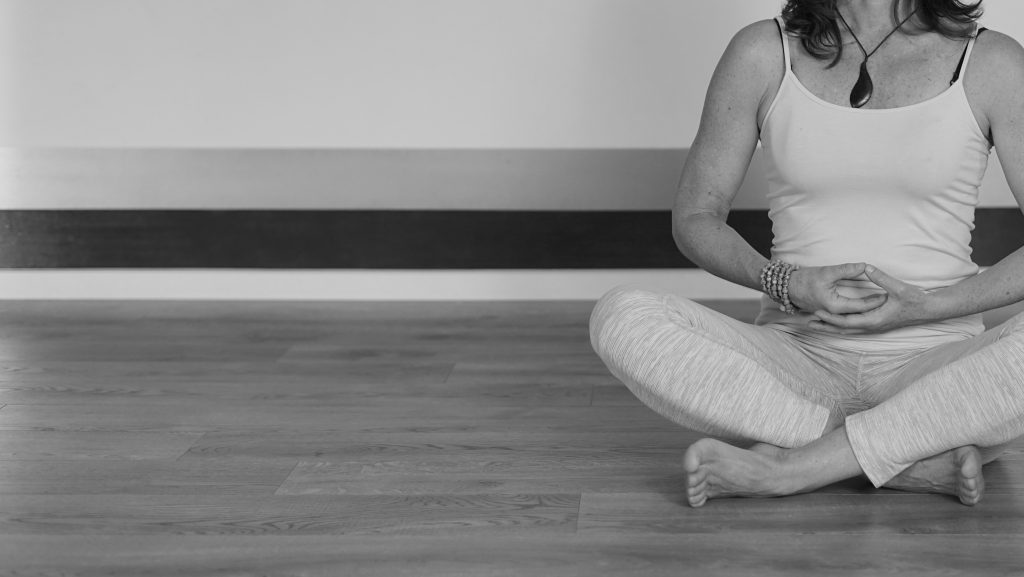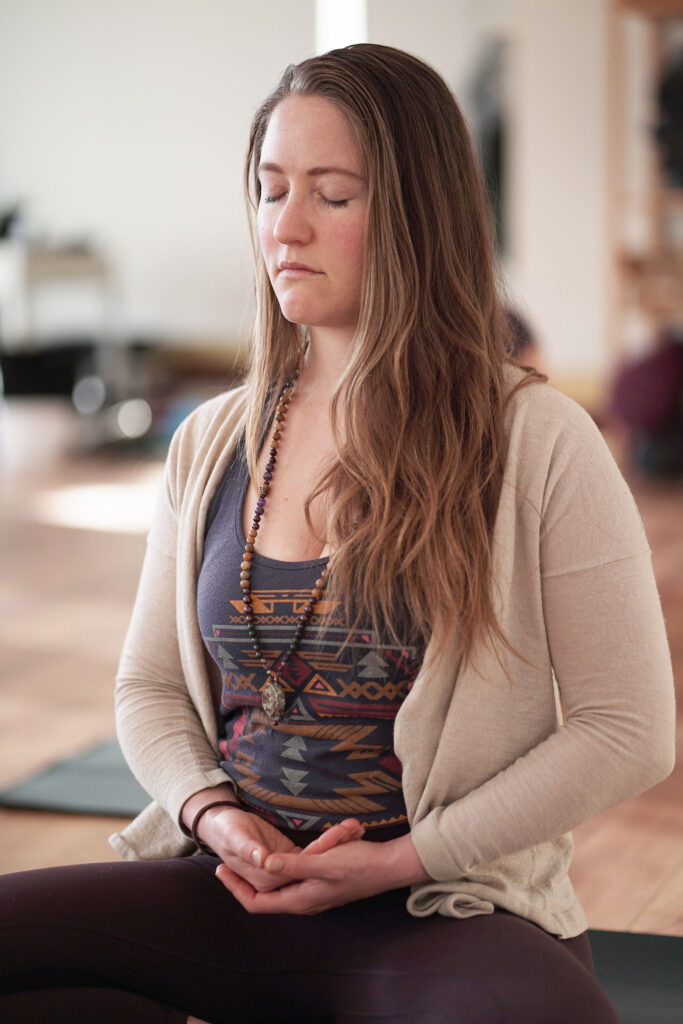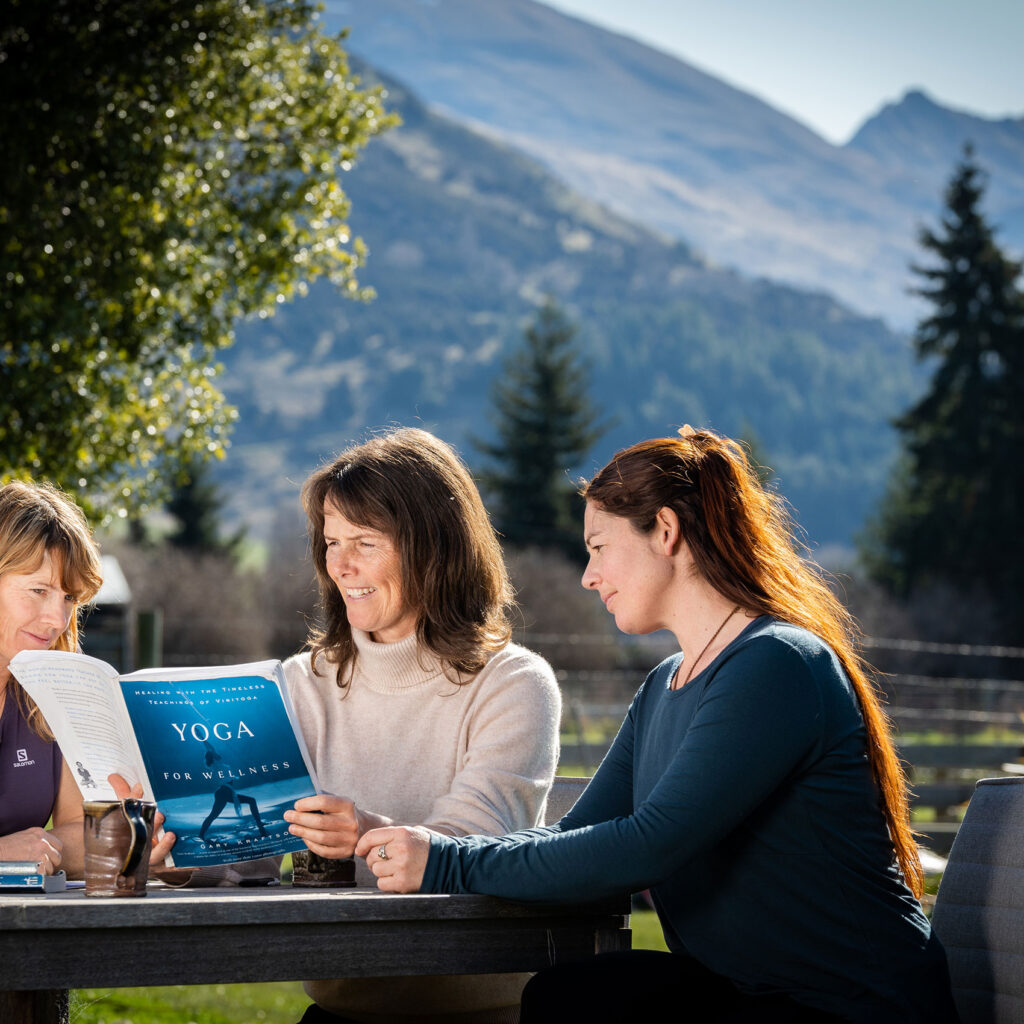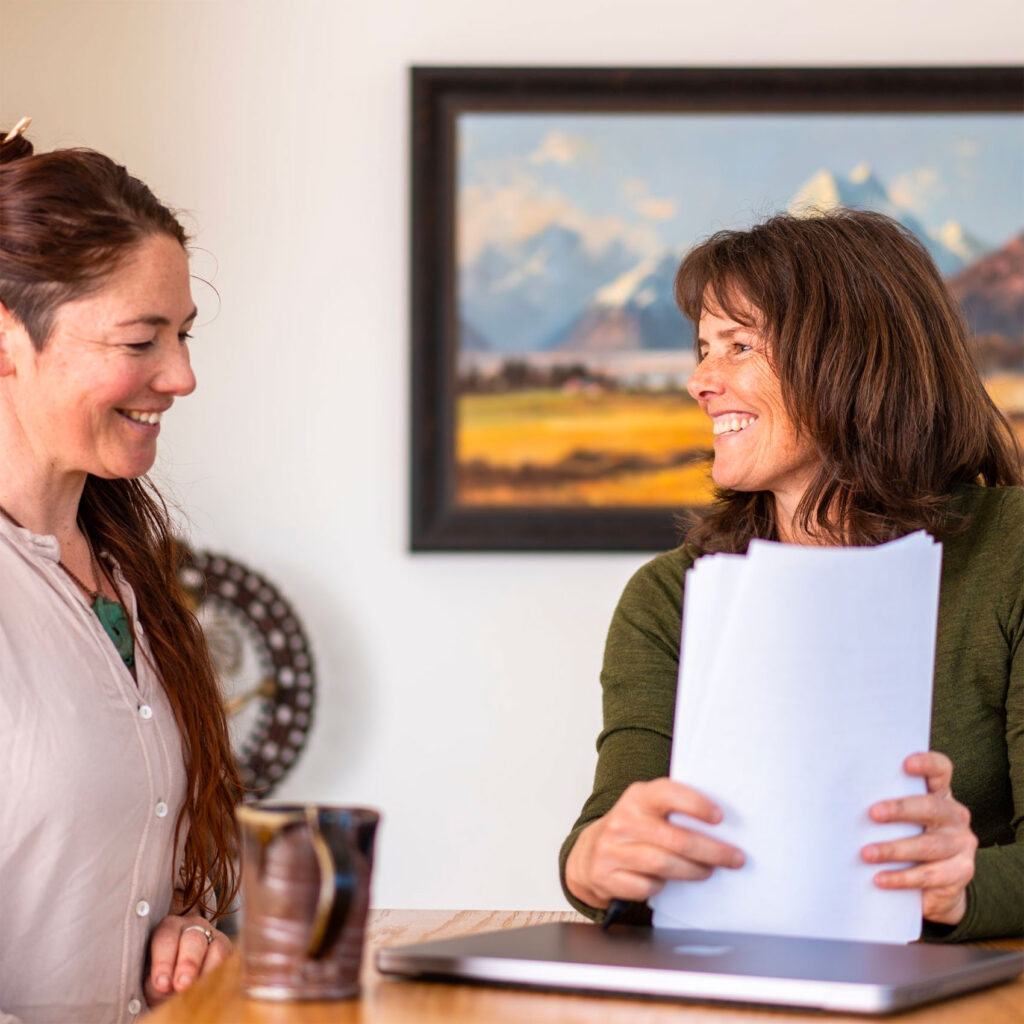
Meditation & Yoga
Meditation, dhyana in sanskrit, is the seventh of the eight interconnected limbs of yoga. Meditation is the culmination and progression of the earlier stages of yoga and is the final stage before samadhi, freedom. As such, meditation transitions students from the physicality of yoga asana to the transformative, holistic experience that yoga is known for.
Meditation & Yoga
Yoga is not just asana. In addition to the physical practice, an exploration and transformation of the mind and consciousness is a key aspect of this ancient practice. Patanjali defines yoga as “yogas chitta vritti nirodha”, which translates as ‘Yoga is a cessation of the fluctuations of the mind.” This clearly points the practitioner to the importance of meditation within the yoga practice, whether it be practising meditation itself or incorporating the strategies of meditation into one’s asana and pranayama practices.
At The Yoga Transition we guide teachers to develop their own personal meditation practice, or for those that already have one we share a methodology of how to incorporate their insights skillfully into their classes. We encourage all teachers to take their yoga practice to this more advanced level, moving beyond just the predominantly material asana practice.
What is the goal of meditation?
The final goal of meditation is an awakening to one’s true nature. Along the way there are many milestones and virtues attained, the first notable one being the cultivation of a stable and quiet mind. Many meditation traditions begin with first learning concentration, attention training. Learning the skill of focusing the mind on a particular object we cultivate the very pleasant state of not chasing after thought. Inherent to this state are the characteristics of non-reactivity and tranquillity, two ways of being that we can then carry into our daily life.
Once we have learnt competency in stabilising the fluctuations of the mind only then are we able to look with stability into the nature of awareness. When the mind is still and focused we can then examine the nature of this awareness that we are, in particular examining the non-dual and ever present nature of awareness, or consciousness.
This shift from the busy, distracted mind to a non-dual, ever present awareness is the goal of meditation and indeed the culmination of the yoga practices.
The ability to teach meditation and to understand its context is one of the core elements we address as part of The Yoga Transition Path, covering how to incorporate meditation into a yoga practice and how to weave meditation principles into yoga asana classes.
Meditation and spirituality
As Socrates once said “A spiritual life is a life examined”. In this way yogis use meditation to examine the nature of their experience. The contemporary mindfulness movement uses mindfulness techniques often therapeutically for reducing reactivity and emotional turbulence. However meditation is so much more than learning mindfulness of thought and emotion. Meditation, as a primary tool of yoga, is a tool for spiritual awakening, for merging with the mother consciousness.
At The Yoga Transition, we believe strongly in teaching this bigger picture, honouring with integrity the spiritual nature of the yogic path. Raja yoga outlines a practical path and structure that leads to this goal, all we have to do is to choose to step up.
Does meditation help with anxiety and stress?
Anxiety and stress have as their roots the reactivity of the mind. Both these conditions are where the mind has been overwhelmed by a particular stimulus or event and the person has been triggered into a state of reactivity.
This state of mind then triggers a physiological response where the nervous system goes into fight or flight – the sympathetic NS response. Often this sympathetic response is accompanied by an unpleasant sensation in the body, which includes the release of adrenaline and cortisol. This unpleasant sensation in the body often results in a reactive thought, a variation of “I don’t like this”, which in turn continues to activate the fight or flight response; and so the cycle exacerbates itself and the anxiety or stress response snowballs.
Someone who is prone to anxiety will often feel out of control when an anxiety-inducing situation arises. When these intense, sometimes overwhelming feelings occur, seasoned meditation practitioners can maintain a stance of observance, staying non-reactive to the arising anxiety and accompanying unpleasant sensations in the body. This doesn’t mean that they will never feel anxious again, but rather demonstrates the practiced skilfulness about not plugging into the emotion and amplifying it. Through cultivating awareness, the meditation practitioner is able to create space between themselves and the reactive tendencies of the mind; to not become identified with the difficult emotion, but rather to remain observant and experientially perceive how the emotion is impermanent.
Meditation is an empowering practice for those suffering from anxiety and stress. Meditation can be a standalone practice or an integral part of a yoga class.


Why consider mentorship?
You will receive personalised guidance on topics ranging from your personal practice, to your teaching skills, to how to move forward with your yoga career.
Our master teacher Susan Allen has over two decades of yoga practice, teaching, and guidance, and credits her most meaningful growth to the gift of mentoring from the world-class master teachers she has been fortunate enough to study with over the years.
Susan has run multiple yoga studios, teacher trainings, immersions, and retreats, and brings all of this experience to her mentoring. Harnessing her practical and technical skillset, she understands and teaches yoga pragmatically, creating a safe and collaborative space for personal development. She disseminates what she has learnt in easy to digest modules which cover both personal and professional growth goals.
Susan has been practising meditation for 35 years and has a wealth of knowledge to share about different styles of meditation, from traditional Vedic meditation to Tibetan Buddhist practices to contemporary mindfulness. She has a keen interest in guiding teachers how to incorporate the practice of meditation into their asana classes.
Develop your yoga teaching style with mentorship
Your initial teacher training would likely have touched on the basic principles of meditation, likely while also covering off mindfulness in the same short breath – but it’s impossible to gain a deep understanding of such a broad topic in a short amount of time. Committed students are looking for something more than just asana and teachers experienced in meditation will lead the way in the progression of the yoga industry. In addition to educating how best to teach meditation within a yoga studio setting, there are a vast number of other teaching elements we help our professional yoga teacher clients develop
At The Yoga Transition we celebrate individuality through:
- Steering your practice and teaching in the direction that most interests you
- Encouraging you to discover your unique voice
- Guiding you to develop a teaching methodology that has both integrity and individual authenticity
Once you have completed your initial teacher training, contact us to find out how mentorship can bring you to the next level.





